Thou sank’st my longboat!

There’s a paper out by Mark Hall of Perth Museum exploring the 36 ancient Northern European burials that have included board games. Two of the game burials were in the Orkneys, which were under Norwegian rule until Tudor times. I tried (and failed) to find the source paper online, not least because the article about it in the Scotsman was behaving oddly in my browser. Fair warning.
Two reasons, they speculate (I remind myself that any discussion of the reasons our pre-literate ancestors did things is always speculation). First, there was such a thing as gamer cred. Prowess at strategy games was regarded as a warrior skill.
Secondly, they wanted to keep the ghost entertained so he wouldn’t come back and mess with the living.
Eh. Who knows? The delightful chess pieces in the picture are real, by the way. They’re called the Lewis chessmen because they were found on a beach in Lewis, Scotland in 1831. Late 12th, early 13th C., carved from walrus ivory. There were 93 pieces found. It’s well worth following the link to read more and see them up close.
And with that, I’m off to play the vidya!
Posted: July 27th, 2016 under games, history, personal.
Comments: 14
Comments
Comment from Ric Fan
Time: July 27, 2016, 8:48 pm
Didnt they all bury with prized possessions? Anyway, how ancient is ancient since Romans were big on games and they were trading with the Vikings.
Comment from S. Weasel
Time: July 27, 2016, 9:52 pm
Well, early in the article it says Stone Age. But were there really recognizable Vikings that far back? I thought they were later.
One of the games was Greek, similar to Backgammon.
Comment from Ric Fan
Time: July 28, 2016, 12:34 am
I dont know what they call stone age these days but what about that Beaker pottery? Isnt that real old and they find that in the UK. I just think there has always been a whole lot of trading going on since humans were put on this planet. People like stuff! <– You heard it here first. 🙂
Comment from Surly Ermine
Time: July 28, 2016, 10:56 am
Love the berserk shield biter.
Comment from Amichel
Time: July 28, 2016, 1:44 pm
I have a set of chess pieces that are copies of the Lewis chessman at home. I purchased them while on vacation in London. They are really quite lovely.
Comment from technochitlin
Time: July 28, 2016, 2:12 pm
I’m currently reading Peter Aykroyd’s “Foundation” and I’m pretty sure the Vikings didn’t start showing up in scary numbers until the late 8th century- Lindisfarne Priory…? Kind of in the cusp between the Bronze and Iron ages in Britain.
Comment from Deborah HH
Time: July 28, 2016, 3:14 pm
Is there something like a Mohs scale for organics? Bones, tusks, antlers, et cetera. These chess pieces seem to have held up very well. They are beautiful. I’d buy a reproduction set in a heartbeat but Husband won’t play chess with me anymore because I am the worst player ever. Has anyone ever found walrus tusk checkers?
(I’m probably not using the right vocabulary to ask my question about hardness scale, so I hope someone will correct me.)
Comment from AliceH
Time: July 28, 2016, 3:29 pm
And out of the deep recesses of my brain comes this unnecessary fact: exophthalmic eyes are often symptomatic of hyperthyroidism.
Comment from S. Weasel
Time: July 28, 2016, 4:38 pm
Well done, Alice H. My mother once had to do a portrait of a woman with exopthalmus. That called for heroic amounts of tact.
Comment from AliceH
Time: July 28, 2016, 7:14 pm
I have the utmost respect for portrait painters. First image I had of a particular great aunt was a truly high quality oil painting her seated at a grand piano (she was a concert-caliber pianist). It was lovely. And I thought she and I bore a striking resemblance.
I subsequently saw photographs. Oh. Well. Yes, it was certainly the same person. Still, that was indeed some heroic tact. 🙂
Comment from S. Weasel
Time: July 28, 2016, 8:41 pm
I wanted to be a portrait painter, but I struggle to capture likenesses. All my proper likenesses are photo-manips.
My mother was very good at it. She’d had proper training. I envied her that muchly.
Comment from dissent555
Time: July 28, 2016, 9:58 pm
Man, why can’t I ever find anything like that when I walk on the beach.
Comment from Rich Rostrom
Time: July 29, 2016, 2:27 am
Grave treasures prompt a question for me: why did those people do that? These luxury goods represented a lot of money or labor from people who by our standards were desperately poor.
The great ship-burials (Sutton Hoo, Gokstad) take it to another level: in our day, $100M of stuff going into the ground. Maybe a billion. And yet the living thought they had to do it…
Comment from S. Weasel
Time: July 29, 2016, 5:36 pm
I’m always uncomfortable ascribing motives to our ancestors, Rich. In evolutionary terms, their brains were every bit as powerful as ours, but we do have lots of evidence from the recent past how much they believed in ideas that we find merely superstitious.
There’s an obvious motive of honoring the dead, particularly the rich and important dead. But I think there was also lots of discomfort in using a dead man’s things. I seem to remember quite a lot of Northern European swords that were found deliberately bent in a U, so they couldn’t be wielded again.
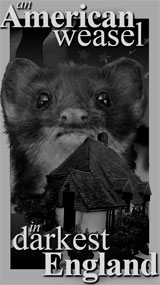
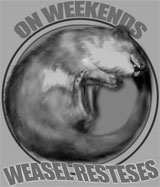

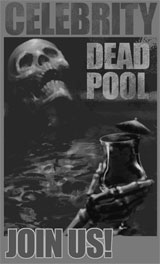
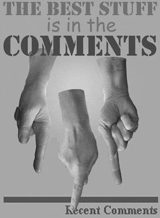

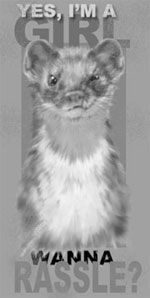
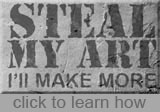



Write a comment
Beware: more than one link in a comment is apt to earn you a trip to the spam filter, where you will remain -- cold, frightened and alone -- until I remember to clean the trap. But, hey, without Akismet, we'd be up to our asses in...well, ass porn, mostly.<< carry me back to ol' virginny